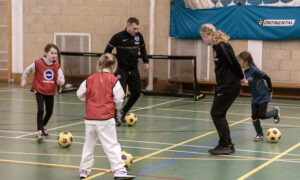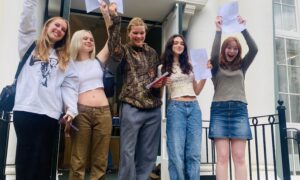Dear Parents and Girls,
We are looking forward to our big 140th Birthday celebration on 6th July with a BHHS Race for Life. As part of the preparations we have been looking at the lives of our earliest students.
Our School Librarian, Lucy Dean, has been exploring the School archives casting light on a fascinating period of women’s history. Founded in 1873, the Girls’ Public Day School Trust was set up following a public meeting at the Royal Albert Hall organised by two sisters active in what became the Women’s Education Union, Maria Grey and Emily Shirreff. The Trust was established on firm principals of academic achievement and women’s rights and opened its first school in Chelsea with others swiftly following around the country. Brighton was the seventh school to be created and took up residence in Milton Hall, Montpelier Road in 1876.
The first teachers at the school were university-educated, although prevented from obtaining a degree from the institutions they had attended. The first Head, Miss Creak, had been at a boys’ preparatory school in Hove where her father was headmaster. She entered Newnham College, Cambridge at the age of 16 and by 21 she was back in Brighton inspiring many of her new pupils at Brighton High School to apply to university.
The initial in-take of 17 pupils at BHS included the future novelist and poet, Amy Levy, dubbed “the Jewish Jane Austen”. She had already published a volume of poetry when she became the first Jewish student at Newnham College. Oscar Wilde described her as “a girl of genius” and her novel Reuben Sachs (seen as a counter-point to George Eliot’s Daniel Deronda), “a classic”. Boys were allowed to attend BHS to a certain age, and so her brothers, Alfred, Willy and Ned accompanied her.
Amy’s friends, the Black sisters, daughters of Brighton’s town clerk and coroner, were also among the first pupils. Clementina, the eldest of 8 children tasked with caring for her siblings on the death of her mother and the ill-health of her father, became a teacher of mathematics and was active in the Women’s Trade Union League. She was an early advocate of equal pay and helped organise the match girls’ strike at Bryant & May. She also published seven novels. Her sister Constance received a government scholarship to attend Newnham College and went on to marry the publisher David Garnett. She was the first to translate the Russian Greats, introducing Chekhov, Dostoevsky, Tolstoy and Turgenev for an English readership. In total she translated more than 60 texts, many of which are still in print.
By 1880, the school had expanded to over 100 pupils and moved to its current home in Thomas Kemp’s former residence, The Temple. The Martindale sisters, Hilda and Louisa, attended BHS at this time. Their mother, also Louisa, was a member of the Women’s Liberal Federation and the National Union of Women’s Suffrage. Unsurprisingly the girls would go on to have public careers, Hilda earning an OBE for her work as HM Inspector of Factories, Southern Division and Louisa being accepted to study medicine at Royal Holloway at the age of 17. Louisa had her own practice in Brighton and went on to set up the New Sussex Hospital for Women in Windlesham Road, courting controversy by writing about and treating conditions associated with prostitution. She pioneered the early treatment of breast and cervical cancers and wrote several books on women’s health. During the First World War she worked in a field hospital in France and was a surgeon in the Second World War in London. She received a CBE in 1931.
Due to its success and increase in numbers, the school moved to the Temple in 1880. Following a series of leaks from the Temple’s original roof, the Headmistress and Art teacher came up with a plan to provide more teaching space by replacing the dome with a Mansard roof, affording dedicated Art and Science rooms, and the staff room at the foot of the stairs became the Library. These were opened in 1912, when the school was renamed Brighton & Hove High School.
So many BHHS girls over the past 140 years have gone on to do many wonderful, ground-breaking things. We hope to do their memory proud by coming together as a school community for a good social cause on 6th July. See you then!


